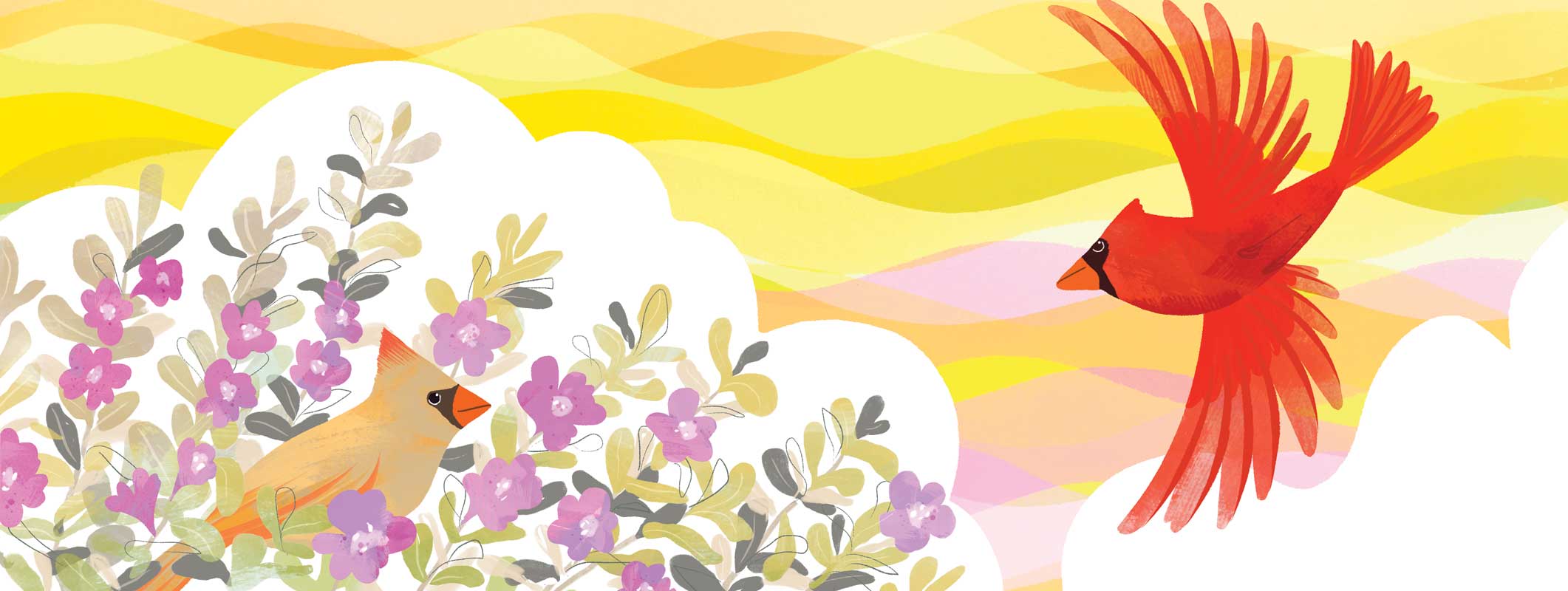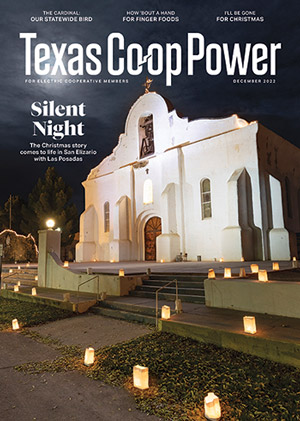Just about everyone knows that the northern mockingbird is Texas’ state bird. But there’s another bird we all know that is common throughout our state, nesting and feeding in brush and trees close to our homes and out in the pastures.
Some know it as the redbird, but it’s correctly called the northern cardinal. This strikingly colored bird is known for its happy chirping calls that can go on all day and for the beautiful crest and orange bill of the adults.
Cardinals are the first birds we hear and see hopping around in the brush outside our houses in the mornings. They are the last birds to go to bed every night, which makes them common prey for screech owls and other raptors. But if we ever get around to reconsidering Texas’ allegiance to the mockingbird, I suggest we consider the northern cardinal. After all, at least seven other states have chosen the cardinal as their own state bird.
The redbird is ubiquitous, especially in the winter since it doesn’t migrate, showing up everywhere from the border country of South Texas to the prairies of the Panhandle. All Texans know the cardinal.
Growing up in the tiny East Texas community of DeBerry in the 1950s, I spent a goodly portion of my young life walking the pastures and open fields around our house. I knocked off more than my share of sparrows, starlings and brown-headed cowbirds as an eager beaver hunter with a BB gun.
I once made a long, long shot with my pellet rifle to kill what we called a French mockingbird. I know that bird now as the shrike, or butcher bird, named for its habit of hanging things it chases down on mesquite thorns and sharpened spikes on barbed wire fences.
I was not allowed, however, to shoot any of the small group of colorful songbirds that lived and nested near our home. The mockingbird was the state bird then, and I feared that could have gotten me locked up.
My dad, who established the shooting list at our house, probably would have pounded me for killing that shrike if he’d known about it. I kept that quiet. But Dad had a long list of birds with bright colors that I would have been in real trouble if I’d killed.
Cardinals were his favorites and first on his protected list, followed by blue jays, bluebirds, scissor-tailed flycatchers and the always cooperative killdeer. Dad loved the way adult killdeers would feign injury and try to lead predators away from their babies and nests.
The beloved cardinal eats mostly seeds and nests around the edges of openings in low brush, especially in the cedar trees of Central Texas. We once had a nest that was built about thigh high in a cenizo just off the front porch of our house. I watched those pinkish eggs for a couple of weeks, until they hatched into three of the ugliest pink babies you could imagine.
The babies got stronger and bigger and were just about to fledge when the nest was robbed by a Texas rat snake that had taken up residence in our flower bed. That was a sad morning when I found the nest emptied and the adults off squawking in the live oaks in the roundabout a few yards away.
There is a similar bird, actually another member of the cardinal family, known as a pyrrhuloxia. The male has a striking crest that’s larger than the cardinal’s but is colored mostly gray and crimson. They are common on ranches in South Texas during the winter. Their beaks are much more parrotlike than the cardinal’s obvious seed-cracking orange beak.
One ranch where I hunt has repurposed fiberglass water tanks buried in the ground for use as bow blinds. The rancher has piled dirt and brush on top of them and put one-way glass windows at eye level as you stand. It’s exciting to watch the male red cardinals flit through the trees as they scout for safe feeding spots on the ground.
Often they land just outside the windows where I can study them closely from just a couple feet away. It’s fascinating to watch them pick up a kernel of corn and quickly demolish it to get at the sweet meat inside. There’s comfort in that tiny, mighty act—in knowing that Texans yet to come will delight in the redbird.


